Shelling on Marco Island is Amazing after Hurricane Irma
October 29, 2017 | Paddle Marco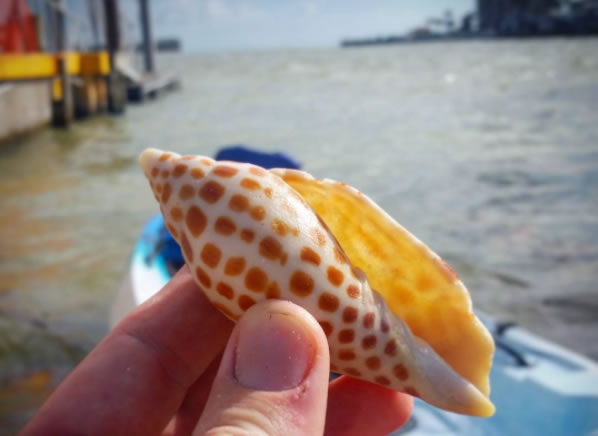
If you have visited Marco Island post Hurricane Irma, you may have noticed an abundance of shells on the beach and barrier islands around Marco Island. The silver lining that comes with a super storm like Hurricane Irma is the amount of shells that the storm surge pushed on shore. A few weeks later, Hurricane Nate even brought us a second wave of shells even though it was hundreds of miles off-shore in the Gulf of Mexico. In the last couple of weeks, we have had several customers who rented kayaks from us discover some incredible shells on the southern end of Marco Island near Caxambas Pass.
The Rare Junonia Shell
This little cream-colored shell with brown spots on it is usually no bigger than 4 inches in length. It’s called the Junonia shell, and it’s one of the rarest shells in the world. It’s rare because it lays deep in the ocean and the only way it can naturally make it on shore is from a Hurricane or Tsunami. Most of the time, they are found along the gulf coast of Florida, more often near Sanibel beach. People that are lucky enough to find the Junonia shell can usually expect to have their picture in a local newspaper. The going rate for one of these shells currently on eBay is around $200 USD. The shell pictured above was taken by Glenn at Paddle Marco when two lucky customers from Kentucky discovered it on Kice Island, just south of Caxambas pass. They specifically went out looking for this shell and found it within the last 10 minutes of their kayak rental! I love it when customers are happy!

The Horse Conch Shell
This shell is a bit easier to find, simply because it can grow up to 24 inches in length! It also weighs up to 15 lbs! The Horse Conch is also the state shell of Florida. Inside the shell is a snail that is a bright orange color. It crawls around mud flats and sand bars all day, eating clams and other small shells. These predatory snails are the A-predator on the mud flats. They will eat just about anything in their path, including their brothers and sisters. Thousands of Horse Conchs are birthed into a sack, about the size of a zip lock bag. Only one gets out. It’s like a game of last-man standing. Finding one of these will make a great front porch or TV stand decoration if it’s cleaned up right! Or you could leave the shell alone and let a Hermit Crab occupy it!
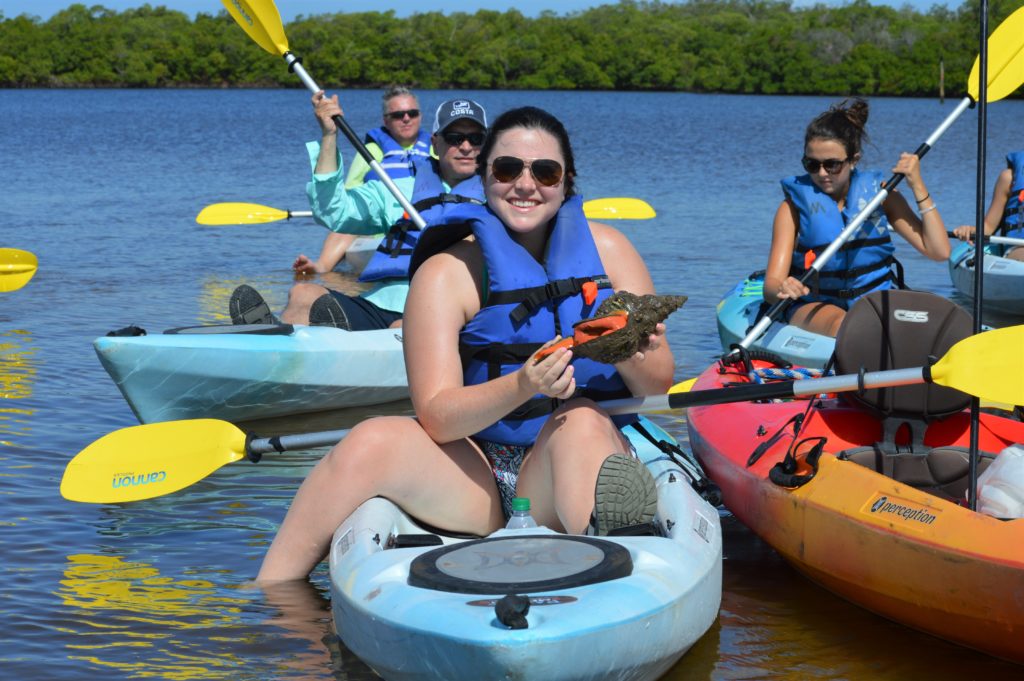
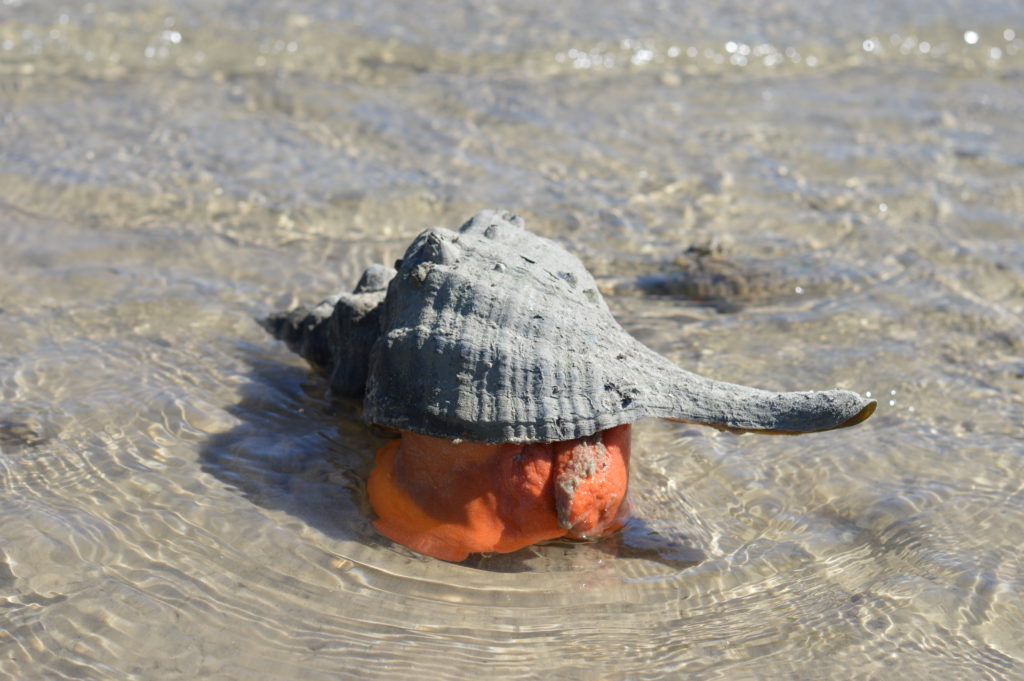
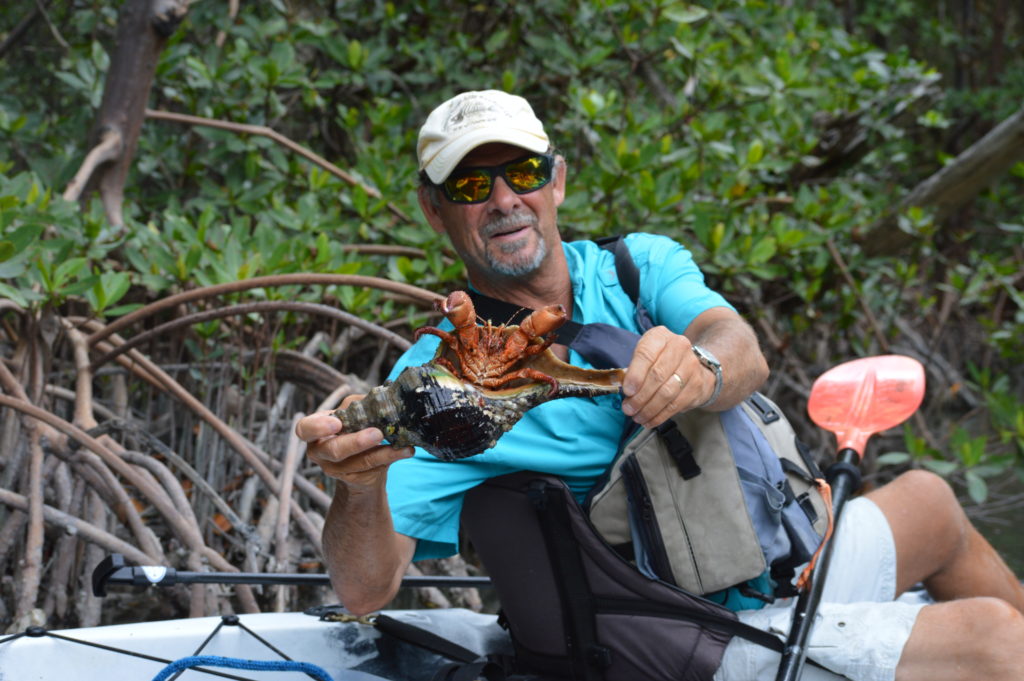
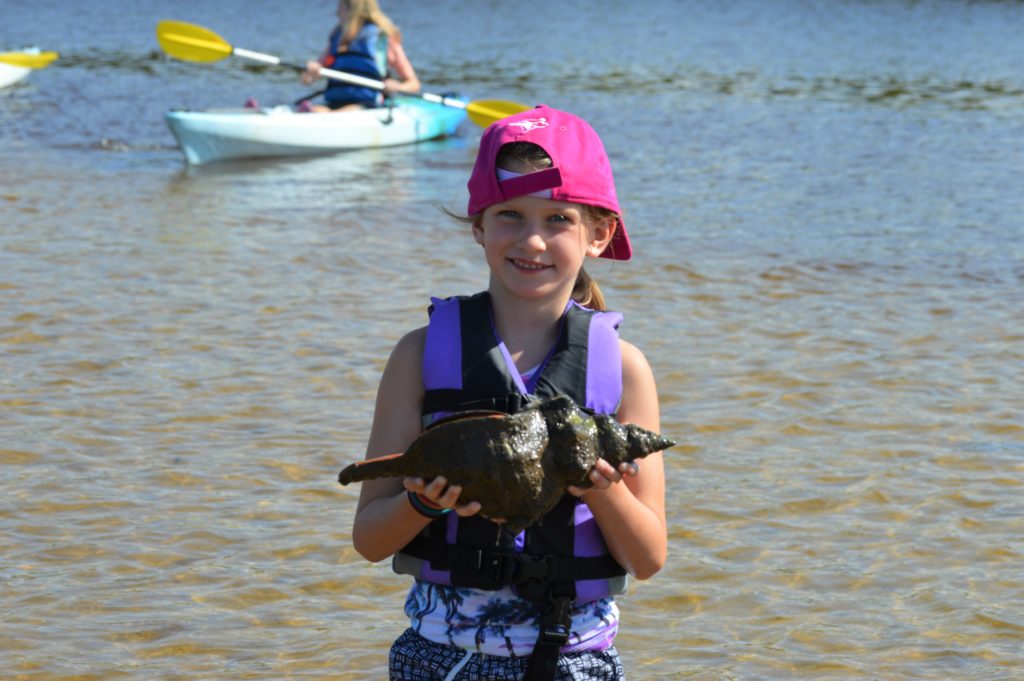
The Lightning Whelk Shell
This massive shell can be confused with a Horse Conch shell, but there are a few differences. It’s one of the only shells in the world that opens up on the left hand side (when you have the skinny side pointing down). The snail inside looks similar to the Horse Conch snail, but it’s a shiny black color… not bright orange. The Lightning Whelk is the state shell of Texas! So that lets you know that these guys are found throughout the Gulf of Mexico. They can grow up to 15 inches long and they often weigh up to 10 lbs! These shells were considered important to the Calusa Indians, which were the native tribe to southwest Florida. The Calusa indians would eat the snail inside and used the shells as drinking cups, axes and anvils. They used their sharp edges to carve out canoes, make jewelry and weapons. Most importantly, they were used to construct their shell mounds, which are mounds of shells where the tribal leaders would live on top of. Shell mounds are found throughout southwest Florida, with the largest shell mount being in Estero bay. It was the capital city of the Calusa Indian tribe. Marco Island has plenty of shell mounds too! Just google up “Indian Hill St” on Marco Island and you’ll think you’re in San Francisco when you drive there! Rolling hills and mounds everywhere… on Marco Island! Unfortunately, all the hills have been developed and there are homes on top of them now.
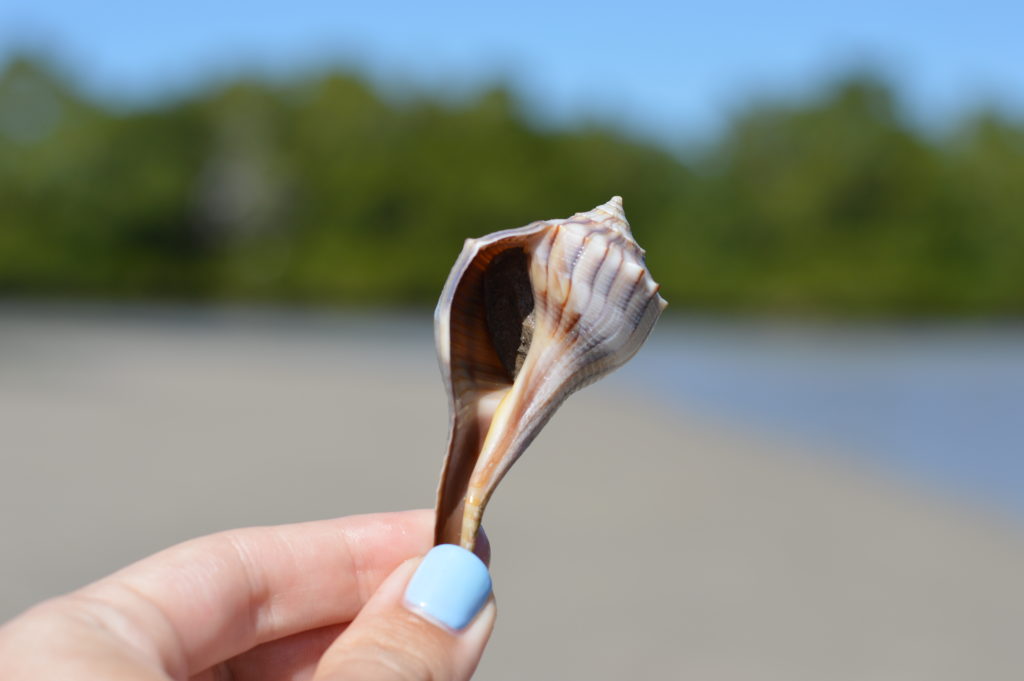
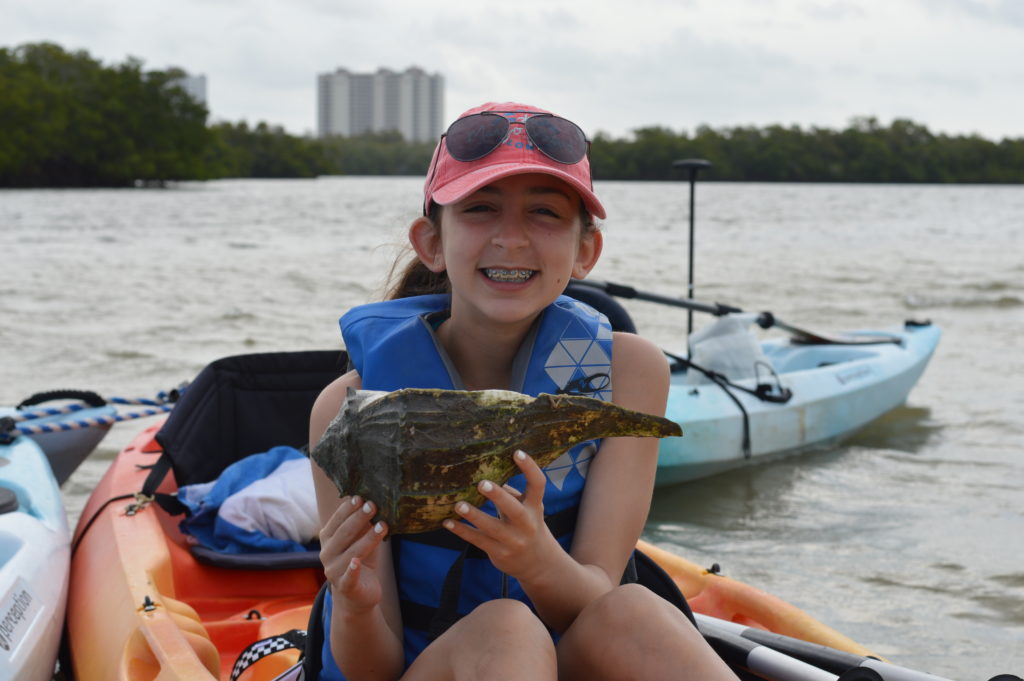
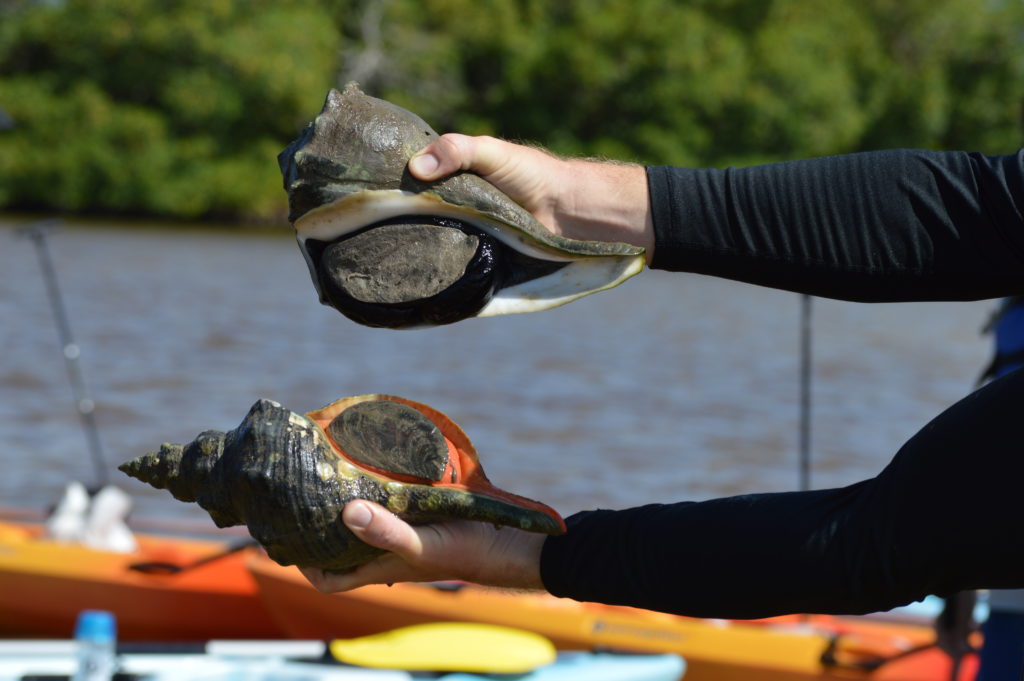
Rules of Shelling and State Laws
We often find these Horse Conch and Lightning Whelk shells on our Kayak tours. It’s important to remember that while it’s okay to handle these shells in the wild and take pictures; it’s not okay to take a live shells. It’s illegal to do live shelling on state land. If the shell is empty, you can take it or leave it for a Hermit crab (or the next lucky person walking along that spots it). So if you’re hoping to find one of these shells… book a kayak tour or rent a kayak or paddleboard today and we’ll teach you all about them! PaddleMarco.com
Go shelling on Kice Island or Dickman’s Point from Caxambas Park with our shelling kayak rentals: Marco Island Shelling by Kayak

